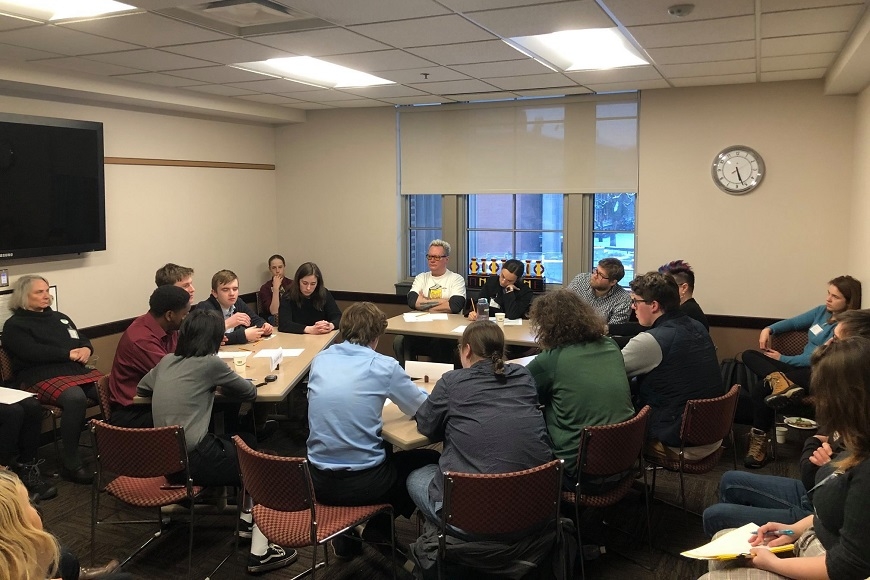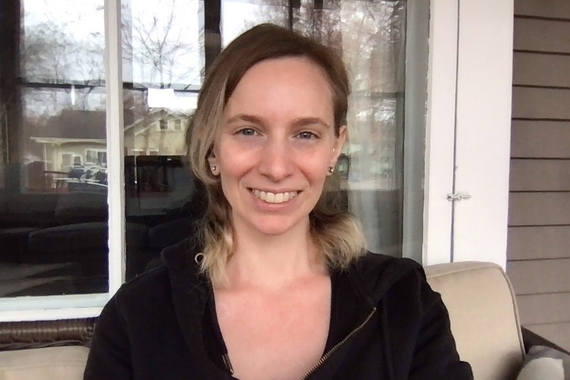Ethics Bowl Teaches Teens Respectful Debate
“Hey, this is the world. Welcome to it.”
These were the words University of Minnesota philosopher, organizer of the Minnesota Regional High School Ethics Bowl, and recently hired assistant professor in the philosophy department, Dr. Cat Saint-Croix uses to explain the real-world preparation the Ethics Bowl gives high schoolers.
Saint-Croix first heard about the Ethics Bowl from a friend and began judging the competitions during graduate school at the University of Michigan, Ann Arbor. Now, for the 2019-20 academic year, she brought it to Minnesota. The organization, while still in its infancy at UMN, has already gained traction under Saint-Croix’s leadership. With the first year under their belts, Saint-Croix and the University’s philosophy department have high hopes for the future of the program, which focuses less on trying to win and more on civic collaboration—on learning to listen to each other's views and adapting yours in response.
The real-life applications gained from participating in the Ethics Bowl range from learning to comprehend articles as more than just facts on paper to improving one’s empathy. Students develop valuable skills throughout each phase of the competition, including preparation, presenting their ideas to a crowd, and professional and civil discussions on differing viewpoints.
How It Works
At the beginning of the school year, teams of high school students receive case studies to review and research for the regional competition in February. During this research period, each topic must be carefully investigated, as there are 15 case studies provided and teams aren’t told which one they will present until the day of competition. Saint-Croix recruits UMN graduate students to be coaches at the participating schools. According to Saint-Croix, the graduate students help high school participants “consider each side and work together to figure out what a reasonable and ethically responsive understanding of those cases would be.”
Once the competition starts, each team presents their research and views on their given case study, and afterward, the other school’s team and the judges have time to ask questions or challenge the team about their presentation. Saint-Croix explains that the end goal is to “come to an understanding of each of the cases that they are working on.” The Ethics Bowl is a competition that fosters healthy conversations, active listening, and self-reflection.
Benefits and New Skills
While no prior knowledge of philosophy is needed to join the Ethics Bowl, students gain a new understanding of it once on a team. The coaches start out by working to give the students a more concrete understanding of three primary moral views: virtue ethics, deontology, and consequentialism. Using these concepts, students can form educated opinions on real-world issues and moral dilemmas, spanning from “Is it okay to walk your pet through a cemetery?” to “Is it okay to punch a Nazi?”
Saint-Croix proudly talks about watching as her students “sharpen their evaluations” and learn to see how different views can conflict. Ultimately, she explains that a key benefit for students is the confidence gained in forming viewpoints with the rationale to support them.
When asked about a memorable moment, Saint-Croix recalls two teams with completely opposing viewpoints. The students calmly discussed the issue, asking respectful questions to better understand the other side’s viewpoint. When the time ran out, she remembered hearing, “Wait, can we just keep going?” The students, spectators, and judges were all so invested in coming to a conclusion that they didn’t want to stop.
This competition sparks great conversations and allows high school students to think in new ways. To get involved or find more information, visit the High School Ethics Bowl website. Saint-Croix gives special thanks to the University’s wonderful support of the program and all they do to help the organization evolve.
This story was written by an undergraduate student in Backpack. Meet the team.



